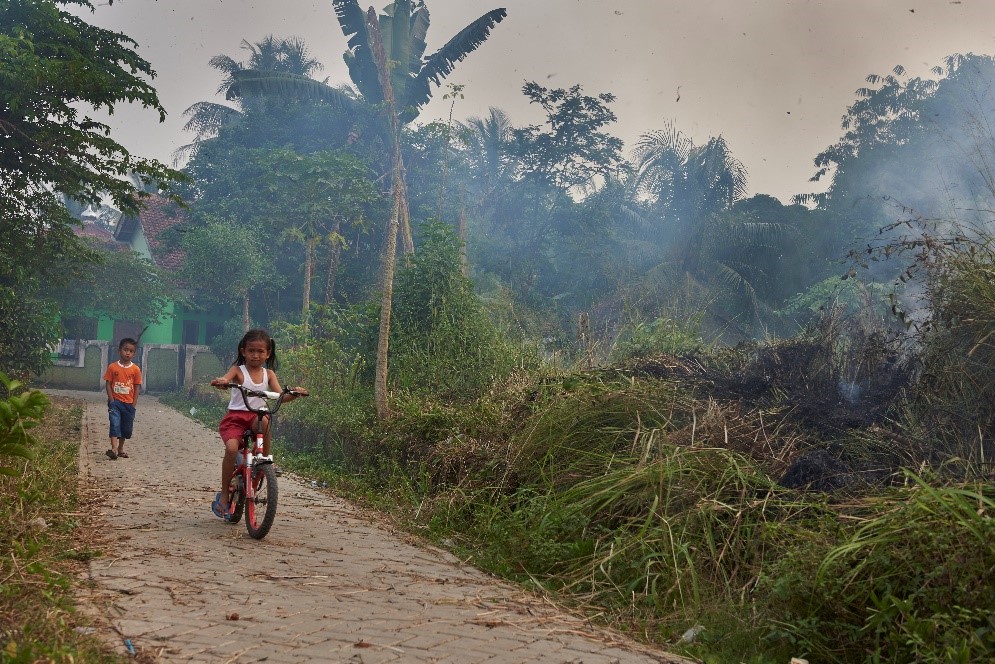Across Southeast Asia, particularly Indonesia, increasing air pollution threatens children’s health

Indonesian children are most vulnerable to the health harms of air pollution.
By Aanchal Mehta and Lynn Tang
With the recently concluded Asian Games, Indonesian cities have been at the receiving end of much media attention for their poor air quality. More and more farmers are using fire to clear land for commercial agriculture, resulting in elevated air pollution levels for months on end. In 2015 alone, it is estimated that the haze episodes exposed 69 million people in Southeast Asia to unhealthy air quality for nearly two months and caused an additional 100,000 deaths across the region. Indonesia also experiences a high level of air pollution regularly, from sources including motor vehicles, coal-fired power plants, dust, open burning and biomass burning from cooking and heating.
The elderly and children are most vulnerable to the harmful health impacts of air pollution. More than 4,000 children die from air-pollution related causes every year. The Environmental Health division at Vital Strategies has been working with UNICEF Indonesia to highlight the growing threat of air pollution to children’s health in Indonesia and to explore long-term mitigation solutions.
In July, Vital Strategies partnered with Bappenas (Indonesia’s Ministry of National Development Planning), the Provincial Government of Jakarta and UNICEF Indonesia, to host “The Air We Breathe,” [KS1] a symposium in Jakarta that called on experts to discuss air pollution and children’s health, and the evidence-based policies needed to create cleaner air. Vital Strategies and UNICEF Indonesia also released an evidence brief to inform governments and other stakeholders on the mounting data that points to lifelong physical and cognitive damage to children affected by air pollution. Here are some facts:
- In Indonesia, air pollution is one of the leading risk factors for death among children under age 5.
- Children are more vulnerable to the effects of air pollution because they consume more air per unit of body size compared to adults, are more active, and spend more time outdoors during traffic peak times.
- Children’s brains and lungs are not fully developed and have fewer natural barriers against harmful particulate matter.
- Prenatal and early life exposure to air pollution increases a child’s risk of health problems such as lung disease, and cardiovascular disease in adulthood.
- Masks are commonly used to minimize risk but rarely work as an effective solution to short- and long- term exposure.

Dan Kass, Senior Vice President of the Environmental Health division, hosting a panel at the “The Air We Breathe” Symposium in Jakarta
To improve air quality, Vital Strategies calls for Indonesia to increase its investment in air quality measurement and management, and to take an intersectoral approach to tackling the leading sources of pollution. This includes promotion of clean household energy, seeking alternatives to the burning of open waste and agricultural residues, ensuring smoke-free environments, developing and enforcing stricter emissions regulations for industry and vehicles, and preventing peatland fires.
CityHealth Perspective is a blog series that examines the importance of urban policies and environments for public health. Urban interventions are a strategic focus of our work and a core strength of our team. With the majority of the world’s population now urban and an additional 2.5 billion urban dwellers anticipated by 2050, public health must play a stronger role in shaping future cities that advance human and planetary health.
